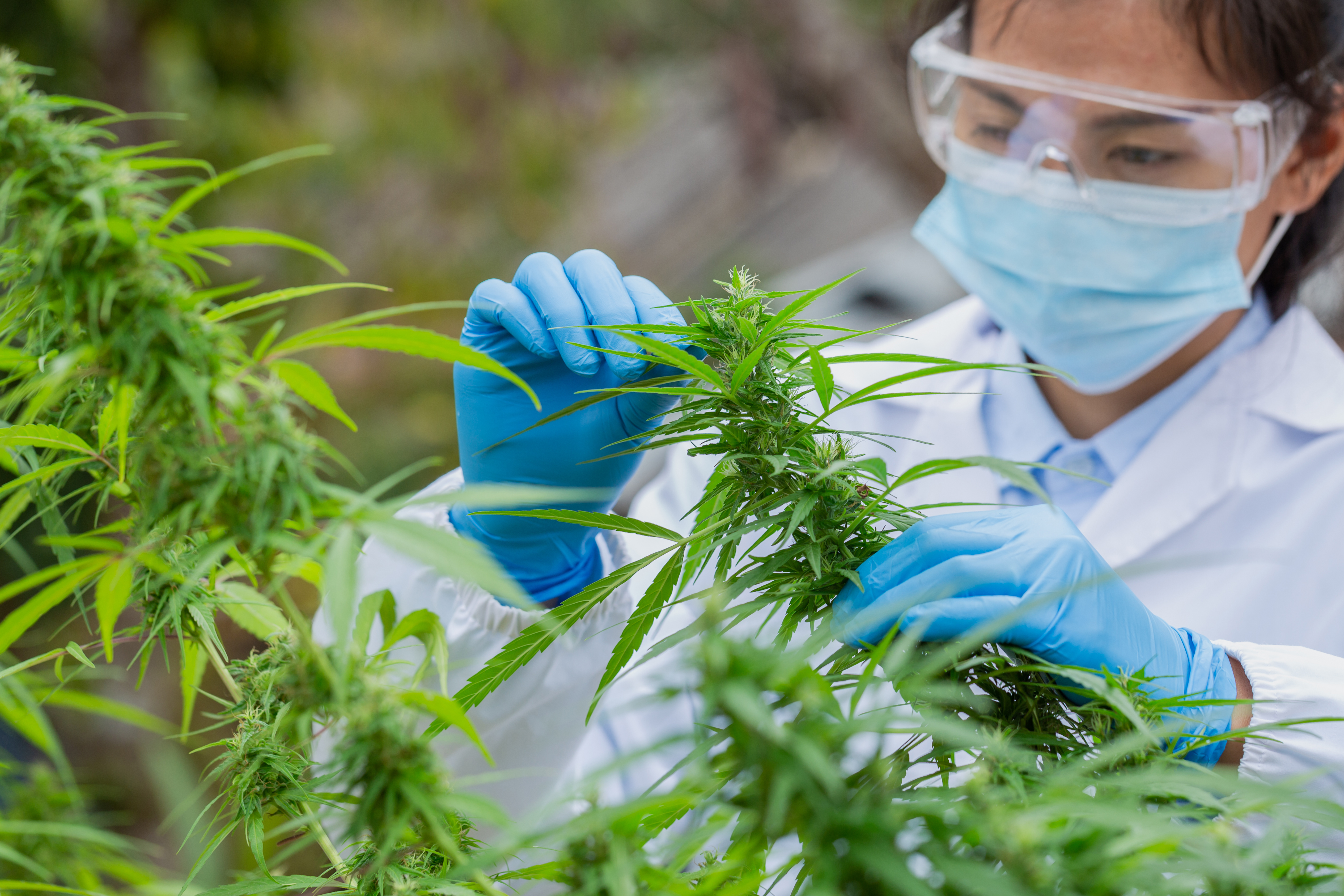Broughton's Regulatory Operations Manager, Emily Saunders, explains what cold-pressed CBD products are and why they are currently exempt from the UK and EU Novel Food Regulations.
Future Cannabis Strategies 2023 - You can't spell healthcare without "THC."
Cannabinoids

Feb 2, 2023 | Published by Paul Barr
Cannabinoids
Principal Scientist, Paul Barr, shares his takeaways from the recent Future Cannabis Strategies conference in London.
The first day of Future Cannabis Strategies opened with a friendly fireside chat with Paul Steckler from Canopy Growth Corporation. It was interesting to hear Paul's views on the industry's current standing. One of the main takeaways was the need for further education for the industry to gain societal acceptance. This includes educating consumers, governments, and medical practitioners. Education, it seems, was a theme that would repeat itself over the next couple of days.
It was fascinating to hear Paul talk about the change in the industry over the last four years and the standards now demanded by consumers concerning product quality, with cannabis flower appearing as the more dominant product among the dose forms. Cannabis flower offers versatility in how it is consumed (oral or inhaled) but also provides a broader range of cannabinoids and a full terpene profile as opposed to an isolate.
Given the deadlock in the novel applications for CBD products, Paul Tossell from the Food Standards Agency presentation was well attended. It was encouraging to hear that applications are progressing through the system. However, there are still significant gaps in toxicology. Although a frustrating process for the industry, the engagement from the regulatory authority at these events offers encouragement. Broughton’s managing toxicology consultant Libby Clarke’s presentation complimented Paul’s perfectly as Libby discussed the impact of gaps on CBD novel food applications. Given the gaps in toxicology data for CBD products, Libby's presentation offered a fascinating insight into how traditional approaches were unsuitable for CBD products and how a more bespoke and targeted approach was required.
Leslie Cash from Orange CBD provided an insightful presentation that re-iterated the flower's popularity and touched on the primary catalyst for growth in the industry, being adoption by corporates and increased trust and public perception due to the availability of higher quality products. A common theme was emerging of product quality, consumer perception, and brand trust.
Given the regulatory challenges, the discussion about staying competitive in a saturated CBD and hemp market was particularly interesting. Naturally, the conversation veered to the current stagnation in novel food applications. However, there seemed to be a general consensus and optimism that approved submissions would lead to a resurgence in the market and innovations.
A series of hosted roundtable discussions offered the opportunity to converse with peers across the industry about the struggles of innovation in a heavily regulated market and debate with political aides on the legalization of cannabis and hemp. A positive note seemed to be an acceptance that, politically, the industry is not as restricted as it once was, and traditional political views on cannabis are evolving. However, it feels like an intense amount of lobbying will be required for progress, and regular change in government has hindered progress.
Tim Philips from CannIntelligence provided a detailed breakdown of the market for consumer cannabis products with a comparison across markets with different regulatory landscapes. Germany's pending legalization of cannabis for recreational use, maybe a powerful driver for product innovation. Germany’s law for the legalization of cannabis is currently being drafted by the federal government and will be presented to the European Commission. Germany's strategy on cannabis could push the EU to change its laws and history of cannabis conservatism. This may lead to widespread legalization across other EU member states.
The conference came to a close with a joint panel discussion with Tim Philips and Leslie Cash on vapes and CBD oils. CBD disposable vapes have become a popular off-the-shelf product. However, there is a lack of regulation in this area. It will be interesting to see how these products are addressed in the third iteration of the Tobacco Products Directive (TPD 3). Additionally, the environmental concerns of these single-use products were discussed.
The Future Cannabis Strategies conference provided various thoughts, opinions, and hopes across a diverse industry. Interesting discussions in the breaks over a coffee or CBD drink accompanied the insightful presentations. The general feeling was that there was a lot of uncertainty, particularly with the novel food’s regulatory pathway. However, this uncertainty seems to be met with an unrelenting passion to drive forward from those in the industry.
One of the key takeaways from the conference was about education. Not only among consumers but among medical practitioners. I was surprised to hear that the endocannabinoid system is not part of the medical school curriculum in the UK and that although a substantial number of doctors who are authorized would like to prescribe these medicines, they are not empowered to do so., Understandably, the healthcare system takes a conservative approach to these products. However, in addition to the need for formal education on the subject, there is also an insufficient quantity of randomized clinical trial data to provide practitioners with the evidence and confidence to prescribe.
Another key takeaway was the effect regulation is having on the industry. Regulation is a good thing; it protects consumers and patients and increases industrial standards. Additionally, it drives quality and provides brands consumers can trust. However, regulation often takes time to catch up with innovation. The regulation of CBD as a novel food has impacted innovation in this sector with an understandable reluctance from manufacturers to innovate new products and invest before seeing approval for CBD products. However, the engagement of the regulators with the industry offers renewed optimism.
As the new CBD novel food regulation is applied, there is a growing divergence between the consumer and medical products; these appear to be two distinct industries that will naturally drift apart over time.
The most common emotion I observed during the conference that unites the innovators, manufacturers, growers, and every member of the industry is their passion for getting these products to patients or consumers in a challenging regulatory environment. Although many are in commercial competition, there is a feeling of solidarity to overcome the challenges.
I heard some heartwarming stories about how cannabinoids have made a difference in the quality of people’s lives and that although the industry faces challenges, there is almost a united resolve within the sector to overcome each of these hurdles with a common aim to enhance people’s lives. With an industry still technically in its infancy and so many more cannabinoids with potential therapeutic indications, I feel there are some exciting innovations and life-changing products that may become available in the next few years, and the cannabis space is one to keep an eye on.


